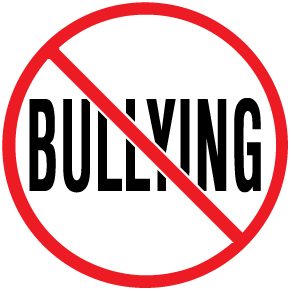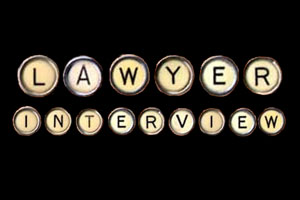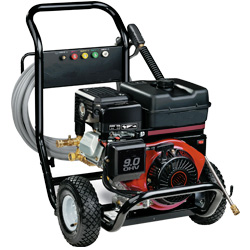Employment Archive
Celine Dion Sued for Overtime Pay, Settles with Former Employees
October 2nd, 2012. By AbiK
Seems the Queen of Love Songs hadn’t been showing the love to two of her former employees. Celine Dion has settled an unpaid overtime lawsuit filed by her former warehouse manager, Keith Sturtevant, and her former front-gate security guard, Raymond Weaver.
To be fair, the lawsuit was filed not only against Ms. Dion, but also against her husband, Rene Angelil and their production company, Feeling Productions, Inc. (Case No. 2:2012cv14236 filed June 27, 2012 in Southern District Court of Florida)
Sturtevant claimed he not only worked at Dion’s warehouse, but also performed various duties at Dion’s house—things like cleaning window shutters on the house, fixing kitchen items and running errands. Sounds like he was a jack-of-all-trades for Ms. Dion as he also apparently set up and tore down party equipment at various events hosted by Dion. According to the lawsuit, Sturtevant was classified as an exempt employee—meaning he would not be eligible for overtime pay; but he performed non-exempt job duties and, therefore the lawsuit argued, he should have been entitled to overtime pay under the FLSA. (Click here for more on exempt vs. non-exempt and what it all means.)
The other plaintiff, Weaver—the security guard—alleged having to take on other duties unrelated to security. These include cleaning Dion’s driveway (it apparently would get berries on it), hosing down patios, cleaning rust off bolts in the swimming pool and lazy river, cleaning tennis courts and, from the sound of it, playing cabana boy should a beach umbrella or two need to be set up—or taken down. Weaver also claimed he was misclassified as exempt.
Well, we won’t know the terms of the settlement, but rather than go to court to duke it out Ms. Dion has settled with Sturtevant and Weaver. And let’s hope both gentleman request detailed job descriptions at their next places of employment…
Bullying at Work Latest Top Legal Issue
September 4th, 2012. By AbiK
 LawyersandSettlements.com recently published our top 10 lawyer interviews for the month of May, 2012—based on your clicks. What was interesting was that the interview Jane Mundy had done with California employee attorney Donna M. Ballman, P.A. on workplace bullying and harassment on the job was the number one interview for the month.
LawyersandSettlements.com recently published our top 10 lawyer interviews for the month of May, 2012—based on your clicks. What was interesting was that the interview Jane Mundy had done with California employee attorney Donna M. Ballman, P.A. on workplace bullying and harassment on the job was the number one interview for the month.
Just as bullying in the schoolyard—and all forms of bullying such as that which we learned about in the national media after Rutgers University student Tyler Clementi took his own life—have become the focal point for new legislation and tougher penalties, bullying at work has become a hot legal issue.
Just last month, HRMorning published an article highlighting the top legal issues HR pros need to be mindful of for the remainder of 2012. Number 2 on the list? Workplace harassment.
The Workplace Bullying Institute (WBI)—you know an issue has hit a groundswell when there’s an organization dedicated to it—states that 35% of US workers have reported that they’ve been bullied at work. Of note, WBI informs that that’s about the equivalent of the combined populations of Washington, Oregon, California, Nevada, Arizona and Utah.
The organization also defines bullying on the job as the following:
“Workplace Bullying is repeated, health-harming mistreatment of one or more persons (the targets) by one or more perpetrators that takes one or more of the following forms: verbal abuse; offensive conduct/behaviors (including nonverbal) which are threatening, humiliating, or intimidating; and work interference—sabotage—which prevents work from getting done.”
While a definition of workplace bullying provides a guide of bullying tactics, for employees and managers, being aware of signs that might indicate an escalating situation—including workplace violence—is just as important. The U.S. Office of Personnel Management (opm.gov) shares the following as signs of workplace violence to be on the lookout for—the signs were identified by the Federal Bureau of Investigation’s National Center for the Analysis of Violent Crime, Profiling and Behavioral Assessment Unit:
- Direct or veiled threats of harm;
- Intimidating, belligerent, harassing, bullying, or other inappropriate and aggressive behavior;
- Numerous conflicts with supervisors and other employees;
- Bringing a weapon to the workplace, brandishing a weapon in the workplace, making inappropriate references to guns, or fascination with weapons;
- Statements showing fascination with incidents of workplace violence, statements indicating approval of the use of violence to resolve a problem, or statements indicating identification with perpetrators of workplace homicides;
- Statements indicating desperation (over family, financial, and other personal problems) to the point of contemplating suicide;
- Drug/alcohol abuse; and
- Extreme changes in behaviors;
Got this Kind of Job? You May be Getting Screwed on Overtime Pay
July 24th, 2012. By AbiK
 Overtime pay calculations are tricky. And, I’m guessing, most employers can appreciate that especially when those calculations translate to less money being shelled out each pay period. Unfortunately, many employees aren’t fully aware of some considerations that need to go into how overtime pay is based. The following types of work can throw a ringer into overtime pay calculations—and if you’re doing any of these kids of jobs, it may time to double-check how much overtime pay you’ve been taking home.
Overtime pay calculations are tricky. And, I’m guessing, most employers can appreciate that especially when those calculations translate to less money being shelled out each pay period. Unfortunately, many employees aren’t fully aware of some considerations that need to go into how overtime pay is based. The following types of work can throw a ringer into overtime pay calculations—and if you’re doing any of these kids of jobs, it may time to double-check how much overtime pay you’ve been taking home.
1. Shift Work. If you’re working various shifts, you may be doing a graveyard shift that pays a higher rate—or, depending on your industry, one shift may pay more than another due to work volumes or time of day. These are referred to as ‘shift premiums’. The basis for your overtime rate should take that into consideration—if it’s not, it could be an overtime pay violation.
2. Non-Discretionary Bonuses. These are bonuses that you might receive based on a quota or some other metric. For example, if you receive safety bonuses based on accident- or injury-free performance, production bonuses based on output or some other measure, attendance bonuses for zero unexcused absences, guaranteed/promised bonuses, profit-sharing bonuses, or bonuses paid as a percentage of earnings—and your overtime pay calculation does not take such into consideration, it may be an overtime pay violation.
3. Paid Commissions or SPIFFs. (SPIFFs are bonuses paid when a salesperson sells a specific product—kind of like when you’re asked if you’d “like some fries with your order”—the more fries an employee sells, the greater bonus he may be entitled to). Commissions can tend vary each month or pay period—but they should be a consideration in how overtime pay is calculated.
4. Piece-Rate Work. If you’re given a monetary incentive to produce over a certain number of units, and that incentive pay is not figured in as part of the basis for your overtime pay calculation, it may be an overtime pay violation.
If you think your overtime pay has been calculated incorrectly and has not taken into consideration any non-discretionary bonus pay, incentive pay or shift premiums, an employment attorney may be able to help.
Top 10 Lawyer Interviews of the Month (May 2012)
June 29th, 2012. By AbiK
 LawyersandSettlements.com publishes hundreds of lawyer interviews each year on the latest legal issues—lawsuits, mass torts, class actions, settlements—that our readers are most interested in. The attorneys—and expert witnesses—our journalists’ interviews provide a birds-eye view into the cases we report on.
LawyersandSettlements.com publishes hundreds of lawyer interviews each year on the latest legal issues—lawsuits, mass torts, class actions, settlements—that our readers are most interested in. The attorneys—and expert witnesses—our journalists’ interviews provide a birds-eye view into the cases we report on.
Here are the top 10 attorney interviews that readers clicked during the month of May, 2012 (in reverse order):
10. Attorney Tim McCarthy, from McCarthy Law Group, on the consumer fraud class action lawsuit over Starbuck’s quitting its Tassimo coffee maker deal with Kraft Foods for one with Keurig.
9. Attorney Barry Kramer, on patients who have either paid, or have been billed, excessive emergency room charges.
8. Attorney Andy Hollis of Hollis, Wright, and Couch, P.C., on the case against ADHD drug Adderall.
7. Attorney Mark Thierman, on filing a class action lawsuit on behalf of Las Vegas limousine drivers against Bell Trans, Nevada’s largest limousine company, alleging failure to pay minimum wage and overtime.
6. Attorney Dr. Shezad Malik, on Bayer being in the process of settling certain Yasmin, Yaz and Ocella blood clot lawsuits.
5. Medical consultant and analyst Lana Keeton, on the dangers of synthetic transvaginal mesh and transvaginal sling for Pelvic Organ Prolapse (POP) and/or Stress Urinary Incontinence (SUI).
4. Attorney Dr. Shezad Malik, on the Yaz and Yasmin bellwether trials. (See more info on bellwether trials)
3. Attorney Leonard Emma of The Law Office of Randall Crane, on California labor—what “independent contractor” means and employee misclassifications.
2. California Labor Attorney Randall Crane answers the question: “Can I be Fired if I’m Disabled?“
1. California Employee Attorney Donna M. Ballman, P.A., on bullying and harassment on the job.
Abercrombie & Glitch? Model Sues A&F Over Masturbation Request on Shoot
June 21st, 2012. By AbiK
 If Abercrombie & Fitch doesn’t use sex—straight, gay, whatever—to sell clothes, I don’t know who does. But it’s their thing…and they’re doing what they wanna do—clearly with some success as measured (non-scientifically) by the number of American teen bedroom walls plastered with Abercrombie ad swipe and posters.
If Abercrombie & Fitch doesn’t use sex—straight, gay, whatever—to sell clothes, I don’t know who does. But it’s their thing…and they’re doing what they wanna do—clearly with some success as measured (non-scientifically) by the number of American teen bedroom walls plastered with Abercrombie ad swipe and posters.
Using sex to sell clothes, however, isn’t as easy as it seems. It means hiring hot models and shooting casually suggestive poses—all while promoting the Abercrombie line. And shooting a casually suggestive shot can have a few glitches. Like, what if the model is having an off day and the photographer can’t quite elicit that relaxed, euphoric, post-sex look from the model?
Well, according to the $1 million sexual harassment lawsuit filed by former A&F employee and wannabe A&F model, Benjamine Bowers, getting the right look can apparently require some manual intervention. Bowers alleges that his modeling agent told him to take his clothes off and masturbate in front of the camera so that his euphoric look could be captured right as it was happening. (Who knows, maybe his agent’s been studying method acting…)
According to an article on Reuters, Bowers complied with the directive. While that could beg the question: ‘why he didn’t just say “no” and high-tail it out of there?’, visions of possibly becoming the next Abercrombie guy with a billboard splattered across Times Square apparently kept him there.
Regardless, the lawsuit goes on to allege that the modeling agent then showed his stuff (trying to keep it clean here) and was making comparisons between their equipment. Which, Bowers allegedly took as a bit of a come-on. Really?
Bowers lawsuit names Abercrombie & Fitch, Hollister Co. California, AIG Model & Talent Management, A&F and Hollister affiliates, and two individuals, the modeling agent and Abercrombie’s casting director, as defendants. And, according to a report at Courthouse News, Bowers is seeking more than $1 million in damages for fraud, negligent misrepresentation, fraud in the inducement, rescission due to fraud, breach of contract, breach of fiduciary duty, fraud, deceit, sexual harassment, intentional infliction of emotional distress, negligent infliction of emotional distress, negligence, and negligent hiring and supervision.
Archive by Category
- Accidents (24)
- Airlines (9)
- Asbestos Mesothelioma (262)
- Automotive (25)
- Celebrity (14)
- Class Action (84)
- Complaints/Comments (15)
- Consumer Fraud (84)
- Contest (2)
- Court of Public Opinion (5)
- Crazy Sh*t Lawyers See (61)
- Criminal Law (4)
- Defective Products (111)
- DePuy ASR Hip Recall (2)
- Discrimination (22)
- Drugs/Medical (248)
- Elder Care Abuse (4)
- Emerging Issues (462)
- Employment (54)
- Environment (52)
- Financial (28)
- Food Illness (15)
- Human/Civil Rights (4)
- Insecurities (5)
- Insurance (16)
- Intellectual Property (16)
- Internet/E-commerce (19)
- lawsuits (161)
- Lawyers (20)
- Lawyers Giving Back (43)
- Lex Levity (10)
- Personal Injury (106)
- Pleading Ignorance (53)
- Real Estate (2)
- Recall (6)
- Scam (3)
- Securities (13)
- Settlement (81)
- Tort Reform (2)
- Totally Tortelicious (81)
- Veterans (11)
- Whistleblower (9)
